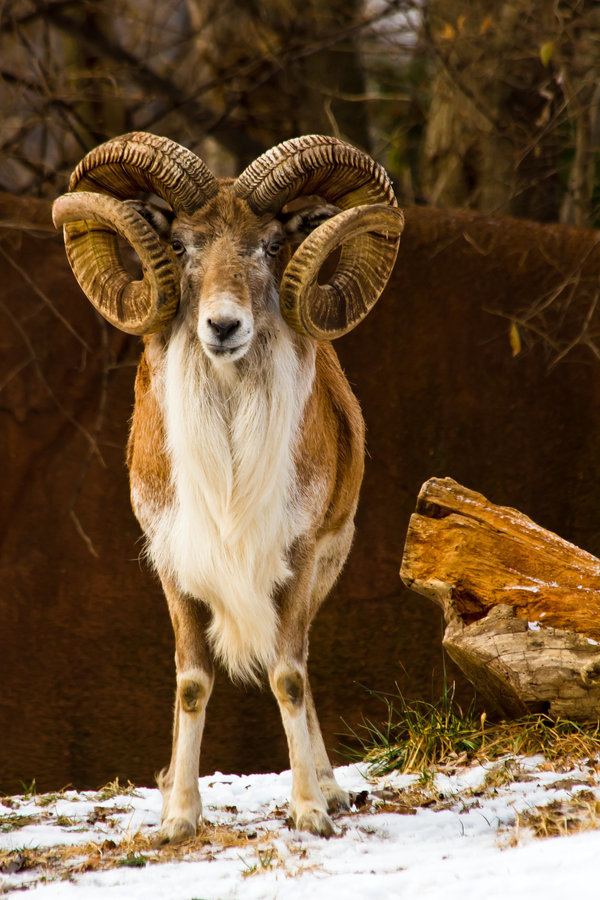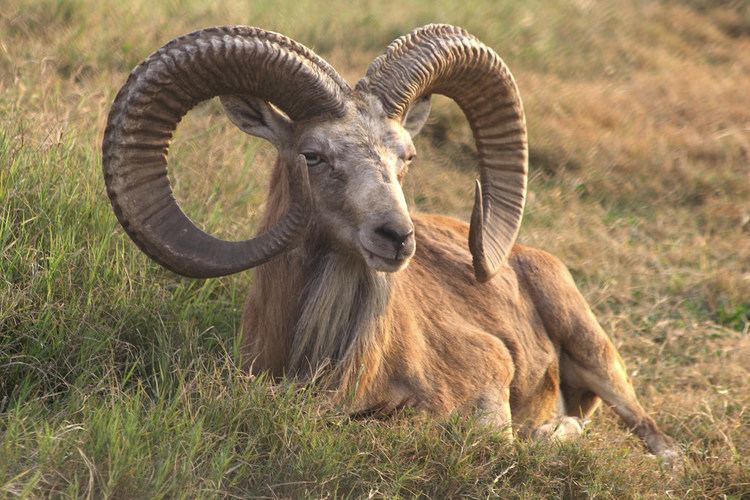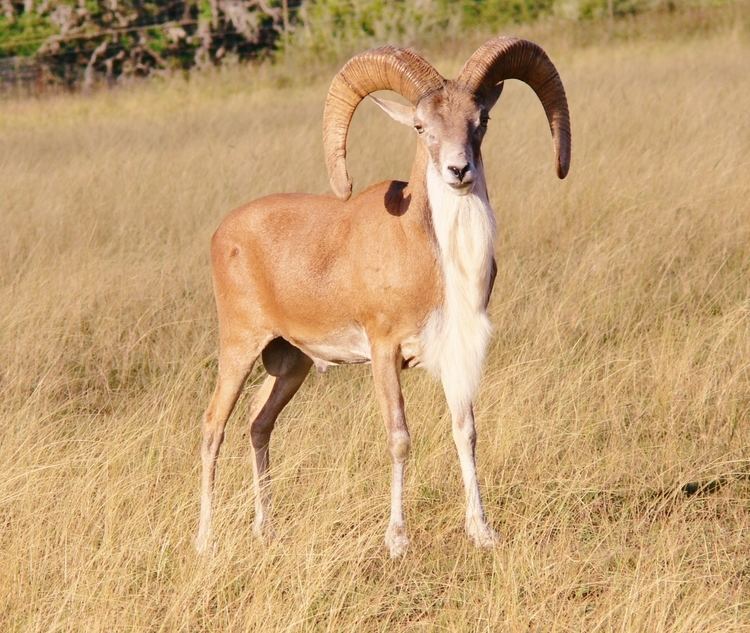Higher classification Ovis Orientalis Order Even-toed ungulate | Genus Ovis Phylum Chordata Rank Subspecies | |
 | ||
Similar Ovis Orientalis, Argali, Ovis, Markhor, Bharal | ||
Urial
The urial (Ovis orientalis vignei), also known as the arkars or shapo, is a subspecies group of the wild sheep Ovis orientalis. Noticeable features are the reddish-brown long fur that fades during winter; males are characterized by a black ruff stretching from the neck to the chest and large horns. It is found in western central Asia. The other subspecies group of O. orientalis is the mouflon (Ovis orientalis orientalis group). The two groups have often been considered separate species.
Contents

Physical characteristics

Urial males have large horns, curling outwards from the top of the head turning in to end somewhere behind the head; females have shorter, compressed horns. The horns of the males may be up to 100 cm (39 in) long. The shoulder height of an adult male urial is between 80 and 90 cm (31 and 35 in).
Distribution

The urial is found in western central Asia from northeastern Iran and western Kazakhstan to Pakistan's Balochistan and Ladakh regions of North India. To the east it is replaced by the bigger argali and to the southwest by the Asiatic mouflon. Its habitat consists of grassy slopes below the timberline. Urials rarely move to the rocky areas of the mountains. For example, in northern Iran they produce hybrids with Asiatic mouflon under natural conditions. Urials feed mainly on grass but are able to eat leaves of trees and bushes if needed.

The conservation status of the urial is threatened as their habitat is perfectly suitable for human development; however the urial population has been recovering in recent years.

The Afghan urial found in Musakhel district in Surghar and Torghar. A 2005-2006 survey by WWF Pakistan shows 145 urials found in Surghar, Srakhowa District Musakhe. Yahay Musakhel et al. 2006)
Behaviour
The mating season begins in September. Rams (which live separately at other times) select four or five ewes, which will each give birth to a lamb after a gestation of five months.
Subspecies
The vignei subspecies group consists of six individual subspecies:
